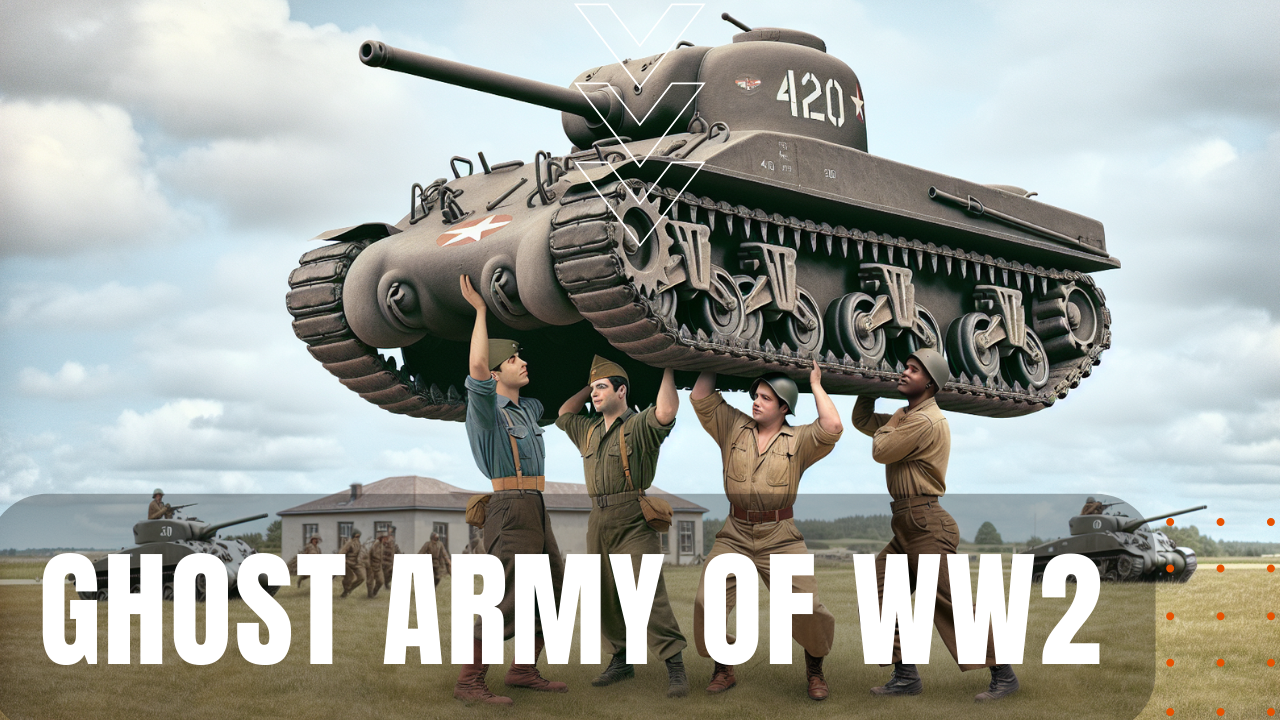The Ghost Army of WW2

Deception in warfare was far from new before the blood stained years of the Second World War—think the Trojan War and the Greek’s now infamous Trojan Horse, or the American Civil War, when out gunned Confederate generals painted logs to look like canons—yet the art of deception reached a new zenith during WW2, when a group of artists, engineers and regular enlisted men concocted one of the most convincing deceptions in human history.
Formation
Coinciding with the D-Day invasions at Normandy, the 23rd Headquarters Special Troops was the first mobile, multimedia, tactical deception unit in US Army history, consisting of 1,023 enlisted men and 82 officers split into three units—visual, audio and radio deception. The brainchild of Colonel Billy Harris and Major Ralph Ingersoll, the Ghost Army’s objective was to amplify their presence to that of two divisions of 30,000 men, effectively distracting the German’s away from actual troop buildups along combat fronts. Among their ranks were such future notables as fashion designer Bill Blass, painter Ellsworth Kelly and photographer Art Kane, who helped in the design of blowup rubber tanks, artillery and aircraft, even using bulldozers to make fake tank tracks in an effort to deceive aerial reconnaissance flyovers.
Tactics of Distraction
Knowing German spies were everywhere in France after the Nazi’s four-year occupation, the Ghost Army also sent groups into French towns, masquerading as tank division officers that were nowhere near the area, causing knee jerk reactions within the German high command. Undertaking 21 deception missions from June of 1944 to the end of the war in Europe, their most important mission was Operation Bettembourg, which took place along the Moselle River, which borders France and Germany. Embedded into a front line hundreds of miles long, when General George S. Patton got wind of a 75-mile gap in Allied defenses, the Ghost Army filled the exposed region with a massive and protracted deception, beginning on September 16th, 1944.
Masters of Deception
Arriving under the cover of darkness, the Ghost Army used amplified mobile speakers to mimic the sounds of approaching tanks, jeeps and light armored troop carriers, along with elaborate radio communications that further deceived the Germans regarding the presence of a massive Allied troop buildup. When the Germans responded with troop buildups of their own to face off against the mounting Allied threat, the 83 Division took advantage of the German’s shift in manpower to relieve the Ghost Army of their remarkable seven-day deception, making the Ghost Army, one of the greatest deceits in the history of human warfare.
